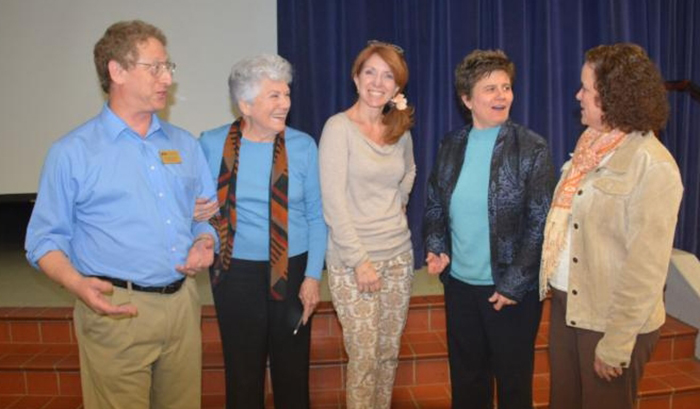[Editor’s Note: Second in a series of interviews with leaders of the school community conducted by activist Scott McVarish for his “Great Schools Project.” Today’s subject: Laura Chardiet.]
First of two parts
My first question to School Board member Laura Chardiet was about her priorities for the bond money passed by Culver City voters in 2014.
Ms. Chardiet: “We have over $100 million that we want to spend to improve our facilities. We are in the process of prioritizing what we believe should happen first. My first priority is for us to finish what we already started: Completing all the projects for the athletic fields and the Robert Frost Auditorium.
“Second, I want us to move forward on the Frost Auditorium for the performing arts. We are waiting for the plans to be approved. It’s going to benefit a lot of students and create a space that the city will be proud of.
“Third, we need to invest in what is going to benefit our instructional learning for the students. For example, we need to move from having science labs from the 1950s to current day ones. Our science labs at the Middle School and high school are antiquated. It’s hard to do even basic science lab experiments. It’s embarrassing.”
Mr. McVarish: Would this complement the curriculum changes required by the new science standards?
Ms. Chardiet: “It could only be enhanced. We should incorporate technology into all classrooms, not just the science labs.”
Mr. McVarish: The needs assessment conducted in creating the plan for the bond came out a lot more than $100 million, so we will have to say no to certain projects. How do we make those decisions? What is the process?
Ms. Chardiet: “We are committed to making these decisions based on relevant data, not on emotion. We are trying to be methodical about collecting necessary data to inform our decisions.”
Mr. McVarish: Give us an example of what might be funded that could be a bit of a surprise for people or what might be cut that may cause an emotional reaction?
Ms. Chardiet: “It depends on what your belief system is. At El Marino Language School, there is an issue with the air quality. We have a commitment to improve the air quality because that’s a safety issue. Do we want to then make a commitment to having air conditioners in the classrooms at El Marino when other schools in the District have the same temperature impacting them? We have to figure out how big a priority is that, and what are ways for us to make the learning environment in the classroom comfortable so the students can work. We also would have to look at how many days in the year is it 80 degrees or 90 degrees to determine whether it is important to have air conditioning provided at all of the schools.”
Mr. McVarish: Your two children went to La Ballona. What do you see as priorities for that campus?
Ms. Chardiet: “If we were looking at air conditioning, we would look at schools that have a second story because the second-story classrooms tend to be hotter. We also have classrooms shaded by trees that are not as hot as other classrooms. When I’m talking about using relevant data, that’s what we’re looking at. We can’t have a cookie cutter approach. We must be careful with our investments.”
Project Labor Agreement
Mr. McVarish: Project labor agreements (PLAs) are an opportunity for construction work done by bond expenditures to be done with the highest quality labor possible, namely union shops. Union shops tend to have a much greater longevity for their workers. When the unions negotiate contracts, they negotiate a high level of training, apprenticeships and other types of education for those members. Thus, those workers tend to be much more highly skilled than the typical construction company who is going to have a lot greater turnover. They can require the public agency to hire from the local community. For instance, 40 percent of the workers funded by our bond money could come from Culver City under a PLA. Most important to me is that they can create apprenticeships at the high school where kids who are not interested in college can learn a lucrative trade due to the PLAs. It’s the advance placement for kids who are not going to college. You are a big proponent of PLAs. Are we going to have a PLA in Culver City that covers the $100 million of bond expenditures?
Ms. Chardiet: “This is what I am definitely advocating. This is best for our city as a whole. There are value-added benefits to having a PLA that will benefit our students and their families. For example, if we negotiated a PLA, we could have in that agreement that our students have priority into those apprenticeship programs. That would be an amazing benefit. The apprenticeship programs offered by the IBEW, for example, is the Harvard of the electricians apprenticeship program. When students finish that program they’re going to leave making $80,000 a year and contributing to our society, benefiting our labor force, our economy. The other value is that you can negotiate that we are going to hire from the Culver City area. Our parents would have priority being hired on those jobs. I would like to direct our superintendent to negotiate the PLA.”
(To be continued)
Mr. McVarish may be contacted at scott@forgreatschools.org and facebook.com/forgreatschools


